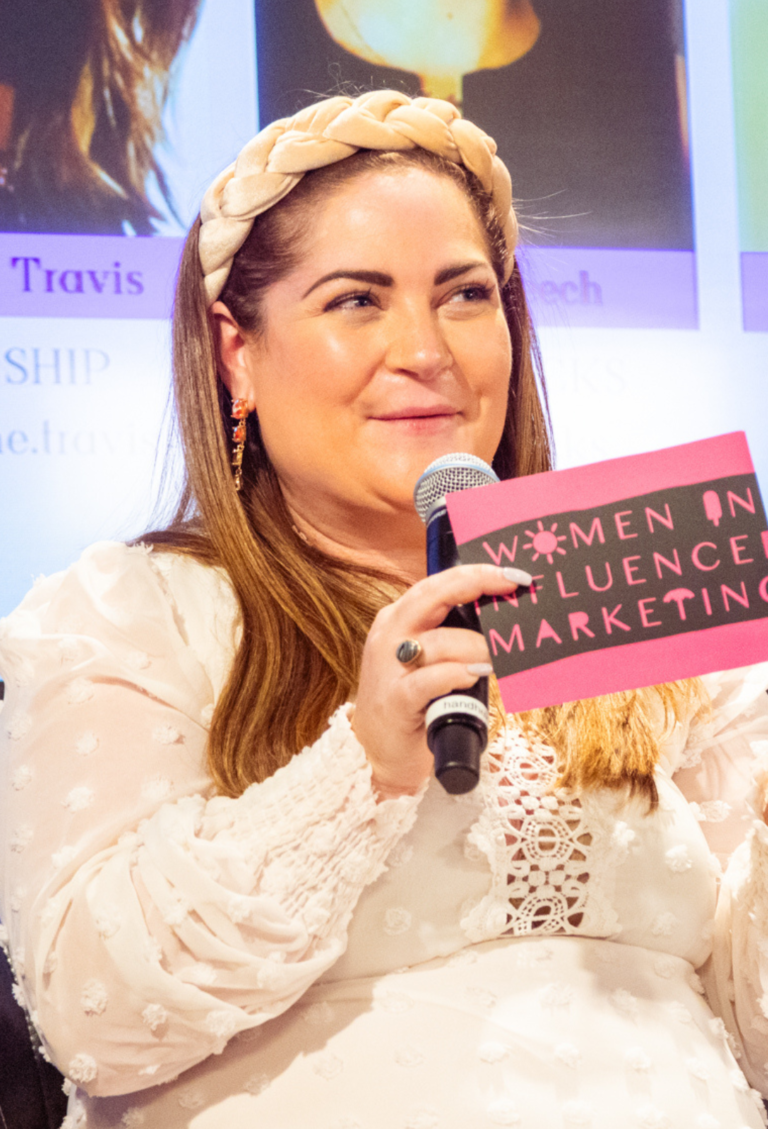Let me fill you in on something you may not catch from a quick look at my LinkedIn. I have jumped from freelance, to corporate work, then back freelance, and again to corporate work, then back to freelance all over again. In 2020, I consciously decided to go back to freelance work as the pandemic left full-time positions far and few between.
I could write a whole blog post alone on the benefits and drawbacks of being a freelancer but the one thing I always share is that it helps you become more resourceful and less dependent on one company to give you a job.
It puts the power back in your hands to construct a part-time income, a full-time income or an additional income stream for yourself.
It’s a valuable skill in its own right that can lead you to new opportunities and abundance.
THE DIFFERENCE BETWEEN FREELANCERS & FULL-TIME EMPLOYEES
There are some major differences between freelancers and full-time employees that contribute to pricing.
1. Freelancers are typically brought on temporarily to complete a specific scope of work or “contract”. The freelance scope typically has a beginning and end, but it can also be indefinite. Even if freelancing is indefinite, freelancers can be let go at any time for any reason when there is no longer need for the contracted scope, or the scope is complete. This is typically laid out in the terms of the contract. (Hence, freelancers can also be termed “contractors”.
2. Freelancers can be W2 “employees” OR 1099 “contractors”. I’ve freelanced under both classifications, with the biggest difference being the way that taxes are handled and the way your money flows. W2 employee freelancers are required to run all payroll to an individual with an SSN. For tax purposes it’s reported as W2 income. 1099 contractors can run their contract and therefore their payment as an individual with an SSN or through a business entity (like an LLC). 1099 income is subject to self-employment tax (or SECA which covers Social Security and Medicare) as opposed to W2 income where the business pays that portion of the tax.
3. Freelancers are not entitled to common benefits that can be standard to full-time employees – including healthcare, paid time-off and, up until 2020, typically cannot collect unemployment when they lose work through a client.
4. Though it may be common at larger agencies to be given shared access to software, most freelancers are required to use and pay for their own tools needed to complete a job or run their business – their business expenses.
It’s these 4 core differences that are typically accounted for and considered on top of a base-pay when a freelancer sets her price.
FINDING A COMPARABLE BASE
One of the best ways to approach rate-setting is to start with the market rate for what you do, your level of experience and seniority. My favorite place to find this intel is to search job listings on LinkedIn and use their estimated salary range or use Indeed, Glassdoor and Zip Recruiter for insights.
Pro tip #1: Search through a few different titles that coincides with your experience and make sure you are looking in the markets you reside. For example, I do a lot of influencer marketing campaign design as a strategist for large brands. I look for agencies with similar clientele, located in similar markets (LA and NYC) and I look at salary range insights for everything from “Senior Managers”, to “Directors” to “Heads” to “SVP” positions to get an idea of the salaries offered for each. Entry level would look for “Coordinator” and “Mid-Level” for Manager titles.
Pro Tip #2: Make sure you are considering the market where you reside if you live in a major city. Major city salaries coincide with the cost of living, so it wouldn’t be comparable if you are based in NYC to look at a Texas based company.
Let’s create an example. Perhaps you are looking to run influencer program management for a company and find a comparable position to be about $70,000 pre-tax annually.
TAKE SOME VACATION!
When you work for a corporation, that $70,000 is inclusive of paid time off and holidays. As a freelancer, you must take into account paid time off and holidays within your rate calculation especially if you are billed hourly or have to report any days off.
There are 52 weeks in a year; 260 weekdays. There are typically nine to eleven celebrated holidays in a year and most companies allow at least two weeks of paid time off (PTO). If you are more senior (or you just WANT more vacation or sick time) just increase the number! Subtract your eleven days and let’s say fifteen days of PTO from your 260 weekdays and you get a total of 234 weekdays.
To convert an annual salary to an hourly rate and include time off, simply divide $70,000 by 234 and then by your typical workday (I usually use eight hours). This brings the hourly rate to $37/hr, pre-tax. Let’s call this base rate.
LAYER IN BUSINESS-RELATED EXPENSES
Freelancers are often required to pay for the tools needed to run their business. Depending on what you do, this could be creative software like Adobe Suite or Canva, or business software like Microsoft Office, Quickbooks, Zoom and more. Expenses like your internet and hardware like your computer are also up for grabs if your “client” is not providing this for you. Be sure to understand the difference between a full write-off and a partial write-off. For things like home-internet and your cell phone you are allowed to deduct only the percent you use for business.
Estimate the cost of every tool and piece of equipment you need to do your job. Let’s say you have an estimated $150/mo in business expenses. Annualize it ($1,800) and divide it by the 234 work days at 8 hours. That comes to about $1/hr that must be added to your base rate, now bringing us to $38/hr.
PROTECT YOUR HEALTH
As you search for comparable corporate salaries rates note that this usually includes healthcare (medical and sometimes vision and dental). Companies tend to cover 50-80% of healthcare costs for an individual – but for freelancers, 100% of your health insurance comes out of your pocket, which could dramatically affect your take-home pay.
If your total coverage for the year costs $5,000, break that down by 234 work days and 8 hours per day. That comes out to an additional $2.60 per hour that you could add to your rate.
We are now at $40.60/hr.
SAVE FOR RETIREMENT OR YOUR BUSINESS
One benefit of full-time employment is a 401K. Some organizations even match your retirement fund contributions. You can layer this into the rate equation as well.
Let’s say your goal is to put $500 into a retirement plan each month. Theoretically an organization would match that, for a total deposit of $1,000 per month. That $1000, annualized, is $12,000 – broken down hourly (234 days and 8 hours) is about $6.50/hr.
This could also be put toward more short-term savings depending on your goal – and then re-invested into your company.
Added to your base rate, we are now at $46.60.
CALCULATE SELF-EMPLOYMENT TAX
Self-employment tax is generally 15% of your Adjusted Gross Income (AGI), which is your total income minus your allowed deductions and business expenses. To calculate this, I re-annualize the hourly rate. So $46.60 x 8 hours per day x 234 work days is a total of $87,235 total income.
When I file my taxes I receive the standard deduction, which you can typically research for the year you are considering or use your past tax records to estimate. In 2019 the standard deduction for a single person was about $12,000, allowing my AGI to be $75,235.
Similarly, if your business expenses are larger than your standard deduction you will be able to drive down your AGI by subtracting your expenses from your total income. Since my business expenses are usually less than the standard deduction, I calculate my SECA with the standard deduction rather than my business expenses.
The IRS has a great resource for fully understanding deductions and expenses here.
15% of the AGI of $75,235 is around $11,000, broken down into hourly (234 workdays, 8 hours a day) is an additional $4.30 per hour. Layered into the base, we’re now at $51/hr.
…AND WE’VE GOT A LOW-END RATE
An influencer marketing manager doing end to end execution that would typically make about $70,000 annually, will take home about the same pay as a $70,000 year employee (inclusive of benefits), if they charge about $50.00/hr as a freelancer. This annualizes to about $87,235 – a difference of $17,000.
That $17,000 difference accounts for paid time off, healthcare costs, higher taxes, the costs of running a business as well as retirement savings. This is an accurate reflection of the differences between a contract worker and an employee who receives these benefits at the employer’s expense.
This is an average, accurate rate for a mid-level freelancer with about five years’ experience.
However, I consider this a “low end rate”. Why? Because it would still require me to work 234 days, 8 hours per day. While it’s possible to have a long-stretch of consistent work, freelancers often deal with project gaps.
So I create a scale.
A RATE SCALE
To prevent this from getting too complicated or having to predict just how busy you will be, I simplify this into a scale. My low end rate is $50.00/hr based on the example above. If a company offers me indefinite freelance employment, a full-time contract for at least a year, I could charge $50.00/hr and make that target salary.
If I worked half as many days, or half as many hours per day – let’s say 6 months with the same holiday time off – I would have to charge $100/hr to still make that target salary. This is unlikely to happen, but this would be my high-end of my scale.
The mid-point is $75.00/hr, which would hit your target salary after ~3 months and accounts for project gaps. This is an average amount of cushion.
This can all be adjusted for your own habits. If you find that you tend to have a full plate, you can hit the same target by charging slightly less. If you find yourself doing a lot of short-term projects with lots of time gaps, you may have to charge closer to the high point of your rate scale.
HAVE FLEXIBILITY
When negotiating, I typically start with my higher rate. In the example above, we may choose to start the negotiation at ~$75-85/hr to lock in SOME business at the higher-end of the scale. This provides flexibility to acquire other work at the lower-end of the scale without affecting your ability to hit your target rate (because of how it averages out).
My experience has been that the wider my range is, the more likely it is that my plate is full and that I’m meeting or exceeding my income target. What may be affordable to one client may not be affordable to the next. I address this with a rate scale and a mindset to “average out” the income from all of my projects. These strategies allow my plate to be more full. You’ll end up declining less work. Keep in mind that pitching takes a lot of time and energy.
Businesses also have different needs and different comparison points in what they consider fair pay.
For example, if you are contracted full-time, you may be brought on as a W2, which eliminates your self-employment tax but would probably lower your hourly rate. A full time gig may pay less but could offer you paid time off, which could lower the rate you need.
Some contractors are given access to tools which could lower your business costs, which in turn lowers the calculation for the same take home pay. It’s worth noting that benefits like retirement and savings may be ideal, but can also be flexible in exchange for other short-term needs or goals.
Final thoughts – Focus on the big picture and how different rates affect your bottom line. If an offer comes in below your minimum rate, it puts your potential take-home pay at risk. This is a moment where you can make a conscious decision to accept it or negotiate further. Exciting projects and clients may give you the experience and skills to push your rate and build successful case studies.

STEPHANIE STABULIS
Vice President, Influencer, MCCANN
Stephanie Stabulis is the VP, Influencer Marketing US at McCann Content Studios. She is a veteran influencer marketing leader specializing in developing influencer marketing strategies and programs for brands. She’s designed and managed award-winning campaigns for start-ups through Fortune 500 companies including icons such as Southwest Air, ESPN, Budweiser, Nestle, Nickelodeon, McDonalds, TJMaxx and Kellogg’s. Her focus lately has been on creating better efficacy in influencer marketing for brands, while protecting the intimate relationship between influencer-creators and their followers.
Stephanie’s mission is to shape the next generation influencer marketing in a way that merges technologies with human creativity, authenticity, emotion, impact and purpose.






